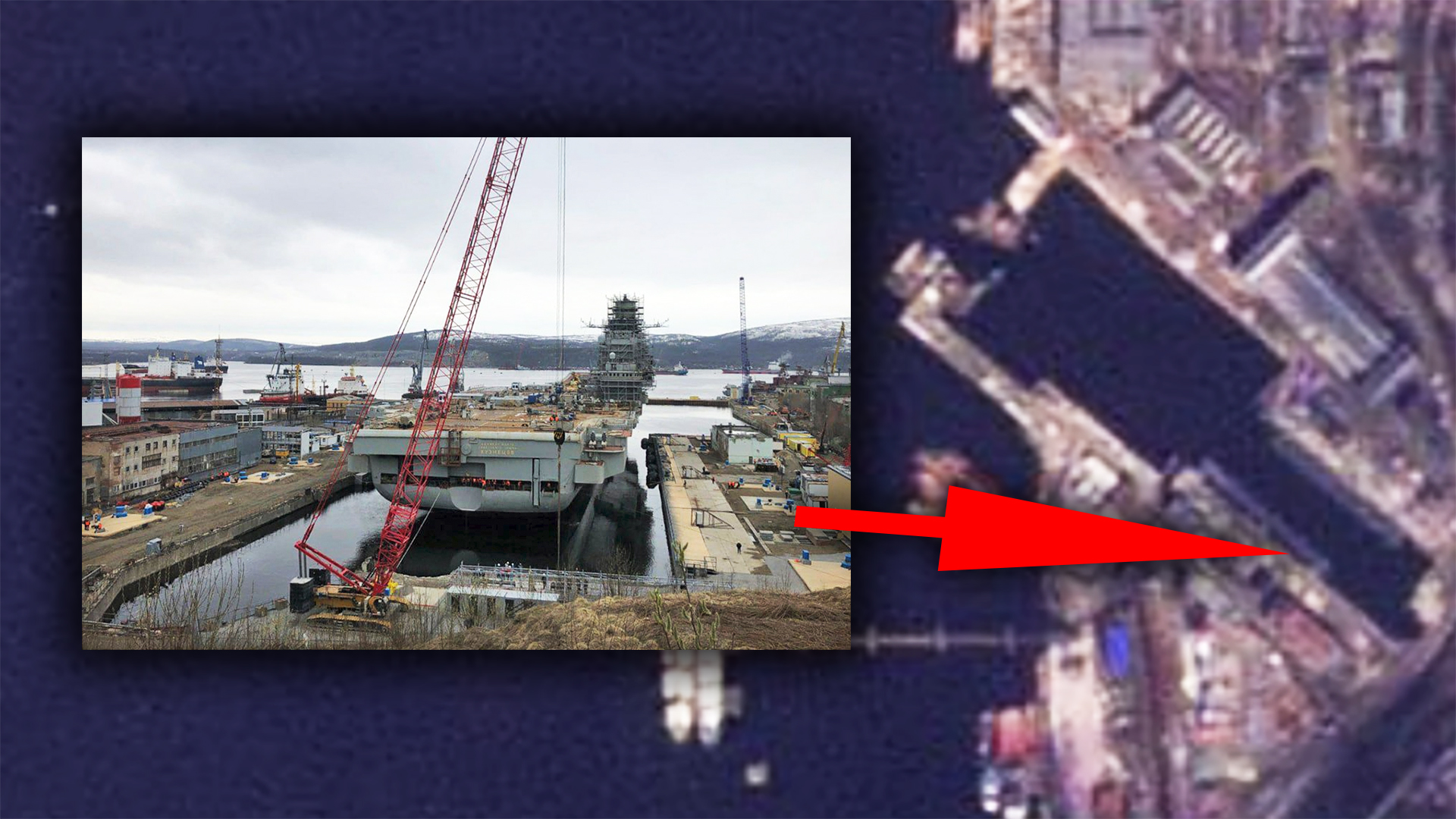Pictures have emerged online today showing that Russia’s lone aircraft carrier Admiral Kuznetsov has finally been moved into a drydock at the Sevmorput Naval Shipyard, also known as Shipyard Number 35 or the 35th Shipyard, in the country’s northwestern Murmansk region. The flattop has been languishing in port there for more than three years after the massive floating drydock PD-50 suddenly sank underneath the ship as it was undergoing a major overhaul. The vessel was moved to a pier after the accident and then also suffered a serious fire just over a year later.
Russian state media outlet TASS reported last week that the Kuznestov‘s transfer into a newly expanded drydock at Sevmorput was imminent, citing anonymous defense industry sources. Those same individuals said that the current goal is to have the carrier’s overhaul finally completed no later than September. Some limited work on Kuznestov continued after the sinking of PD-50 in October 2018.
More than a year ago, work began to create a new drydock at the 35th Shipyard to form a single basin that would be large enough to accommodate Kuznetsov. As can be seen in the satellite images from Planet Labs below, the construction entailed joining together two smaller drydocks and then also building out an extended enclosed basin in front of them.

The loss of PD-50 had exposed significant Russian naval shipyard infrastructure deficiencies with no other remaining Russian Navy drydock being big enough for the carrier, which was originally built in what is now independent Ukraine. There were subsequent discussions about linking smaller floating drydocks together or sending Kuznetsov to Vladivostok in Russia’s far east to make use of large commercial drydock there before the current course of action was settled upon.
The movement of Kuznetsov into the 35th Shipyard’s new large drydock underscores the Russian government’s continued desire to return the ship to service. However, the saga of this carrier, which has already been bedeviled by accidents and other issues for decades now, could be far from over.
By all indications, the timelines for the construction of this expanded drydock and the final completion of Kuznetsov’s overhaul have been pushed back multiple times in the past two years or so. The TASS report from last week said that if the schedule slips past September, the ship won’t be able to even begin the necessary post-work sea trials until some time next year simply due to seasonal ice around Murmansk, which is situated just north of the Arctic Circle.
There have been reports, supported by recent pictures of the drydock, including of it now with Kuznetsov inside, that Russian officials made the decision to move the ship inside despite construction not even being fully complete. The reported plan currently is to seal the ship inside manually since a purpose-built gate for the drydock has not yet been built. The water inside would then be pumped out. This entire process could take between two to three months on its own.
All of this can only continue to raise questions about whether the Russian government’s insistence on retaining Kuznestov at all is a prudent use of funds and other resources that might otherwise be better allocated to other efforts, including the construction of new large-deck amphibious assault ships. The War Zone has explored this in detail in the past.
The time and effort, as well as cost, just to expand the drydock at the 35th Shipyard has to have been significant and is a considerable expenditure to support just one ship. At the same time, this does give the Russian Navy’s Northern Fleet more immediate access to a larger drydocking facility in general, which could be used to work on multiple vessels at once, especially large surface combatants or submarines that might enter service in the future.
There is also then the matter of how much it will cost to continue to operate and maintain the more than three-decade-old Kuznetsov, as well as a carrier air wing to go with it, if and when the carrier returns to service. Budget pressures, together with supply chain issues, are only likely to increase on Russia’s military and the country’s defense and shipbuilding enterprises in the near future due to crippling international sanctions imposed as a result of the invasion of Ukraine earlier this year.
Regardless, for the time being, at least, Russian authorities clearly remain intent on returning Kuznetsov to service. It remains to be seen whether the ship’s overhaul will proceed on schedule now that is finally inside a new drydock that can’t sink.
Contact the author: joe@thedrive.com
